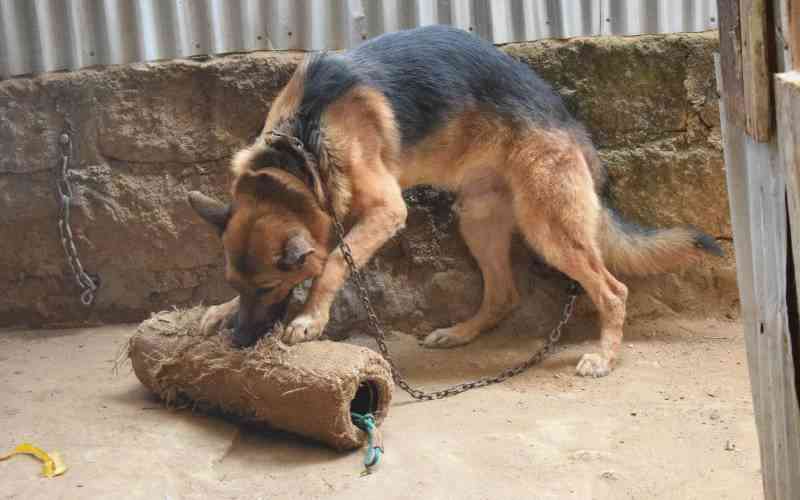The Kenya Society for the Protection and Care of Animals (KSPCA) has issued a warning regarding the rising cases of paralytic rabies, caused by both domestic and stray dogs across various neighborhoods in Nairobi.
Speaking to The Standard on anonymity, an officer at KSPCA confirmed an increase in the number of dumb/paralytic rabies in various Nairobi estates including Kibera, Lavington, Rongai, Karen, Ngong, Lang'ata, Dagoretti, Ruaka, and Kilimani.
"It should be noted that rabies is not only spread by unvaccinated dogs; 99 per cent of the time it is by domestic dogs. It is key for pet owners to ensure their pets are vaccinated," the officer said.
KSPCA, in its alert, urged the public to call emergency number 0733 571 125 if they encounter an animal suspected of having rabies.
What is Rabies?
Rabies is a viral disease affecting the central nervous system and is preventable through vaccination. Once the virus reaches the brain, it becomes incurable due to the blood-brain barrier.
Signs of paralytic rabies include the patient being quiet and lucid throughout. The cause of the illness is a little more prolonged, starting with initial tingling or paralysis at the bite site.
The victim's muscles will then gradually become paralysed, starting from the wound site. A coma slowly develops, and eventually, death occurs.
How to tell if a pet has rabies
Animals and in most cases, a cat or a dog that has rabies will be exhibiting unusual behavior, and aggressiveness, while some may try to bite you. Other indicators include or other animals excessive drooling in animals.
"The animal might also look disoriented, agitated, and display signs of aggression," the officer explained.
How long can an infected animal stay with the virus?
The period depends on the rate of multiplication of the virus. A rabid dog is likely to die naturally within 10 days after developing symptoms.
Veterinary doctor Wahome Maina explained that a rabid dog typically succumbs to the virus within two weeks, exhibiting symptoms such as aggression, difficulty swallowing, drooling, and seizures.
"A rabies-infected dog can do up to two weeks’ maximum with the virus in its body and it is easy to tell by following symptoms like aggression or being very lethargic, experiencing difficulty swallowing, excessive drooling, staggering, and sometimes seizures," he said.
Stay informed. Subscribe to our newsletter
He noted that it is key to exercise caution when encountering unfamiliar animals and to avoid approaching or handling wildlife, which can carry the rabies virus.
After how long is a dog vaccinated against the virus?
A puppy should have its first rabies vaccination at 14 to 16 weeks of age, and another vaccine a year later. The animal will then need a booster shot every one to three years, depending on the vaccine.
KSPCA insists that there lingers a sobering reminder of the importance of vaccination and responsible pet ownership.
Rabies remains a very real threat, both to animal and human health, and vigilance is key to preventing its spread.
According to the society, over 2,000 people die annually of rabies in Kenya, a disease that is preventable through vaccination and sterilising animals.
 The Standard Group Plc is a
multi-media organization with investments in media platforms spanning newspaper
print operations, television, radio broadcasting, digital and online services. The
Standard Group is recognized as a leading multi-media house in Kenya with a key
influence in matters of national and international interest.
The Standard Group Plc is a
multi-media organization with investments in media platforms spanning newspaper
print operations, television, radio broadcasting, digital and online services. The
Standard Group is recognized as a leading multi-media house in Kenya with a key
influence in matters of national and international interest.
 The Standard Group Plc is a
multi-media organization with investments in media platforms spanning newspaper
print operations, television, radio broadcasting, digital and online services. The
Standard Group is recognized as a leading multi-media house in Kenya with a key
influence in matters of national and international interest.
The Standard Group Plc is a
multi-media organization with investments in media platforms spanning newspaper
print operations, television, radio broadcasting, digital and online services. The
Standard Group is recognized as a leading multi-media house in Kenya with a key
influence in matters of national and international interest.










